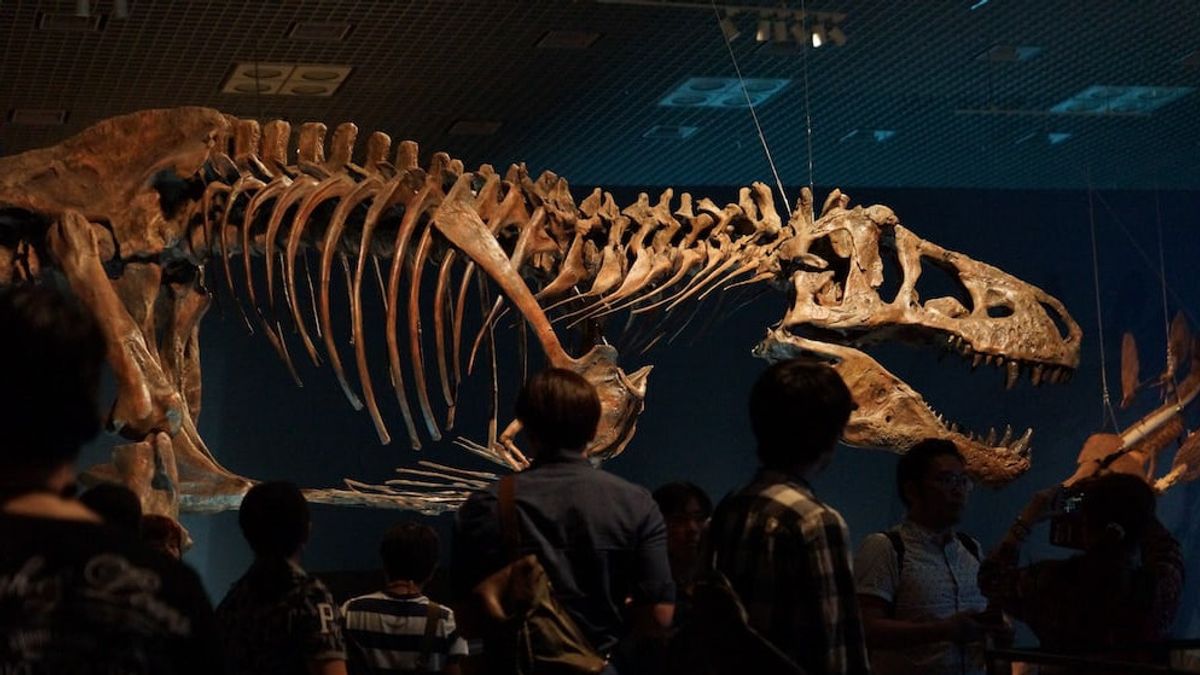JAKARTA - Scientists managed to reconstruct the brains of Spinosaurus, the largest group of meat-eating dinosaurs ever lived. The brain, created from animal remains excavated in Surrey and in the SAME of Wight, England.
Digitally reconstructed, scientists used gray matter and the inner ear of the dinosaur from a six-foot-long skull in individuals named Baryonyx and Ceratosuchops.
Each of them had explored the place 25 million years ago, now called Guildford Bay and Brightsone near Sandown.
"Despite their unusual ecology, it appears that these early brains and spinosaur senses retain many of the same aspects as other major theropods," said lead author Chris Barker, a PhD student at the University of Southampton, England.
"There is no evidence that their semi-aquatic lifestyle is reflected in the way their brains are regulated."
Spinosaurs are unusual types of carnivorous dinosaurs, they live in water and also on land. They are equipped with long jaws like crocodiles and teeth as sharp as six-inch silets.
They usually lurk on the riverbanks to look for large fish. It is a lifestyle that is very different from the better known theropods such as Allosaurs and T.rex, which they dwarf.
Baryonyx and Ceratosuchops are 30 feet long, more than 10 feet tall and weighing about five tons. Ceratosuchops translates as a hell crane with the face of a horned crocodile, for roaming like a bird. Its Alis is decorated with a series of horns and low bumps.
Meanwhile, Baryonyx, has a very large scratch on its first finger used to tear fish apart. They are equipped with fin-like tails.
Further questions about research, soft organs such as the brain, do not survive fossilization. So scientists who are members of the UK and the United States (US), use CT scans to peer into the perfectly preserved skull cavity.
They isolate the skull parts, fill their respective gaps. Relieve the area that provides a 3D space representation or called endocast.
A brain model Ceratosuchops will be displayed next to its bones at the Dionosaur SAME Museum in Sandown, and their findings have been published in the Journal of Anatomy.
"This new research is just the latest in the number of revolutions in paleontology due to advances in CT-based fossil imaging," said co-author Professor Lawrence Witmer, of the University of Ohio in the US.
"We are now in a position to be able to assess the cognitive and sensory abilities of extinct animals and explore how the brain evolves on extreme dinosaur behaviors such as spinosaurs," he added.
Analysis has found the bones of Ceratosuchops and its cousin Baryonyx congested, such as penguin bones, hippos, and current alligators.
The bones provide buoyancy, where they can sink themselves as a strategy to kill, as quoted by Metro, Thursday, February 16.
Dr. Neil Gostling, who led EvoPalaeoLab University of Southampton, said the new study, "supports the important role of British fossils in our growing and fast-moving understanding of dinosaurs and shows how Britain is at the forefront of spinosaur research," said Gostling.
"Spinosaurs themselves are one of the most controversial of all dinosaur groups, and this research is a valuable addition to ongoing discussions about biology and their evolution."
Animals that find food in water have nearly solid bones while animals that live on land are more like donuts, with a hollow center.
The English, Chinese, Japanese, Arabic, and French versions are automatically generated by the AI. So there may still be inaccuracies in translating, please always see Indonesian as our main language. (system supported by DigitalSiber.id)













